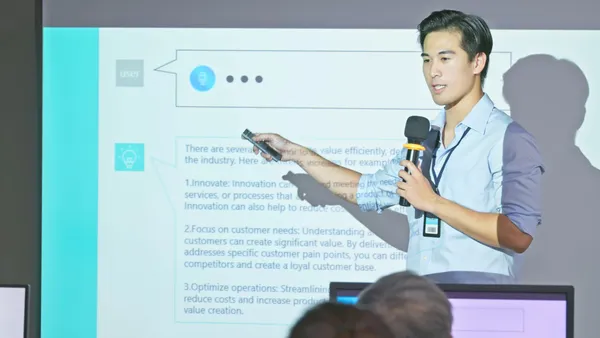David Knapp is the director of technology and innovation for the Loveland City School District in Loveland, Ohio. Previously, he served as a technology instructional coach and a 9th grade science teacher in the nearby Hamilton City School District.
How do I ensure an efficient and user-friendly digital ecosystem for all our stakeholders?
The question is very relevant to me as the director of technology and innovation at Loveland City Schools. Educating all users on technical, digital, media and information literacy, alongside academic curriculum, is crucial for preparing students for the 21st century. Simplicity and efficiency remain a challenge with a hundred different items commanding the attention of an educator.
I want our teachers to have easy access to the data and tools they need to best educate our students. They shouldn’t have to jump through hoops.
Regular challenges
Some of the common challenges we regularly face include:
-
Maintaining and managing program user accounts.
-
Pushing user account and course information to digital programs.
-
Streamlining a variety of tools in an easy-to-use and integrated environment that leverages each tool for the value and purpose that it provides.
-
Ensuring return on investment of said programs and resources.
For Loveland educators, technology provides many opportunities, but siloed technology can tend to create more work and less time teaching. Consider a fairly common scenario in a classroom:
-
Teachers log into Google Drive to pull up a curriculum folder.
-
They log in (with a different username and password) to a textbook company to access resources.
-
They log in to a grade book to import grades out of a learning management system (an additional silo).
-
They run analytics through a different platform. This platform requires data to have physical CSV uploads. Uploads must be downloaded from the state.
-
Education plans live in a separate silo and don’t appear alongside curriculum nor assessment results (which would be useful for differentiation).
-
Two different platforms are used to communicate student behavior — one for the parent and one for the administration team.
-
And so on.
Add up the time hunting and gathering data, and you see opportunities wasted. It shouldn’t be that way.
The power of interoperability
For me, interoperability means the ability for digital programs to talk to one another with a safe, secure and automated exchange of data.
Most importantly, interoperability helps Loveland be more efficient with its personnel and time, and takes tasks off of teachers' and administrators' plates so that they can serve the needs of students.
What does interoperability look like? It means teachers and students use one username and password to view data combined from multiple sources and to manipulate sources to different endpoints. For example:
-
A teacher pulls a segment of a textbook into their Google Classroom (textbook company to Google).
-
The classroom is populated by the teacher’s students from the student information system (SIS to Google).
-
The teacher assigns an assessment in Google Classroom. It’s graded. The grade is pushed into the district’s gradebook software (Google to gradebook).
-
The grades are pushed to the student information system which then pushes a report to the state (grade book to SIS to state).
-
With data interoperability, these processes are automated and simply work even though the district is using different products and technology vendors. And they should — because districts own the data.
Moving forward
Interoperability has recently become a priority in selecting and working with vendors. If opportunities for interoperability do not exist, we will look elsewhere.
We’ve recently experienced success with the open-source platform Abre. Working with their team of former educators and administrators, we were able to integrate a number of different applications through common interoperability standards. They simplified much of the complexities of education software.
With limited funds, resources and time available to schools — and for the future of ed tech to grow and evolve in a way that supports the work of teaching and learning — the tools have to continue to become more user-friendly, intuitive and automated for use in the classroom. This includes ideas of interoperability as it relates to a free exchange of data to help support insights and a-ha moments that lead to improved student outcomes and achievement.












